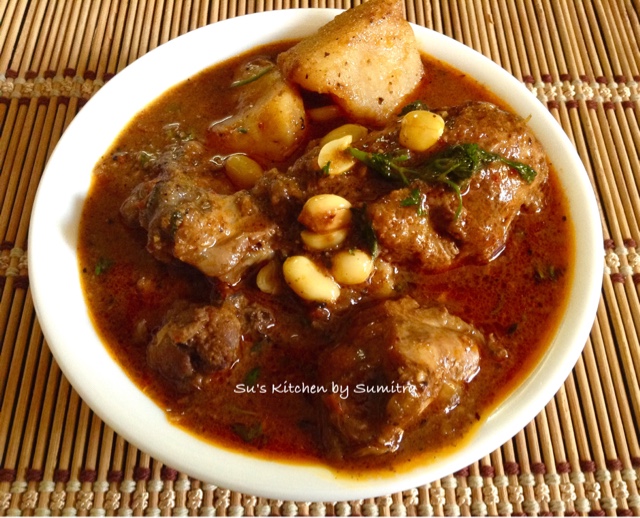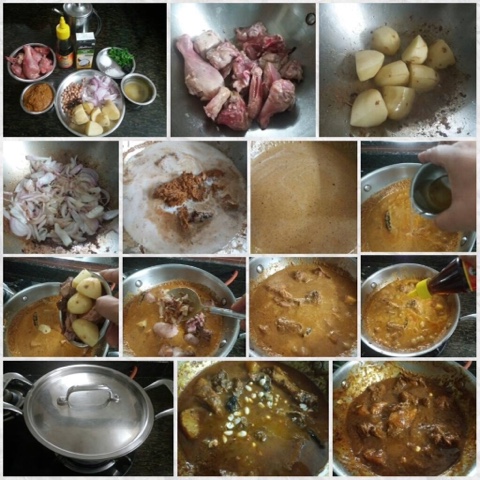Dubke
This dish is made in the Kumaon region of Himachal. It is a very simple to make using Yellow pigeon peas made into paste and made into pakoras using 1/2 the paste and the rest of the remaining paste is used to make the gravy. The type of lentils can vary. Green grams or Red lentils can be used.
Ingredients
1/2 cup Tur dal / Yellow Pigeon Peas washed and soaked for 2 hours
1 Tomatoes chopped
1/2 tsp Cumin seeds
1/2 tsp Mustard seeds
1 Red Chilli broken
1/2 tsp Turmeric powder
1/2 tsp Chilli powder
Salt to taste
1 tsp Ghee
Oil to fry the pakoras
2 tbsp Coriander leaves chopped for garnishing
For the final Seasoning
1 tsp Ghee
1/4 Cumin seeds
1/4 tsp Mustard seeds
1 Red Dry Chilli broken
Method
Add the dal, 1/4 tsp cumin seeds and salt in a grinder and make it into a paste. To make the pakoras, take 1/2 the dal paste. Heat oil in a wok. Add the 1/2 tsp dal paste in oil and make small pakoras. Keep it aside.
To make the dubke, heat oil in a wok. Add the remaining cumin seeds, mustard seeds and red chilli. Let it crackle. Add the remaining dal paste. Stir fry it continuously for 2 minutes. Add 4 cups of water little at a time, stirring it continuously. Add salt, turmeric powder and tomato. Boil and then simmer the dal on low flame for 20 minutes, stirring occasionally. Mean while soak the pakoras in water. After 20 minutes add the pakoras and simmer for few minutes. For the final seasoning take a pan, add the ghee. Let it heat. Add the chill, cumin seeds and mustard seeds. Let it crackle. Add the seasoning from top.
Garnish it with coriander leaves.
















